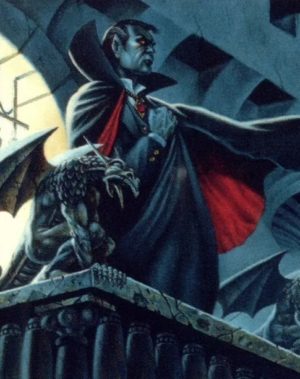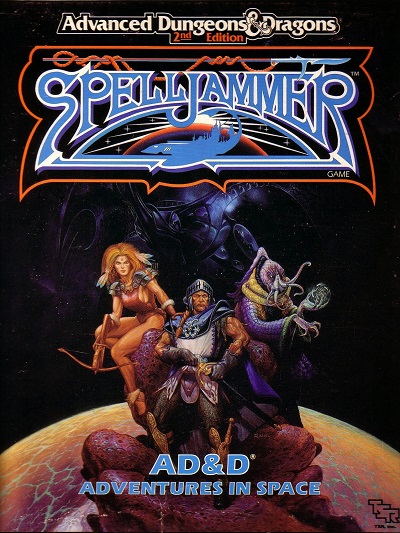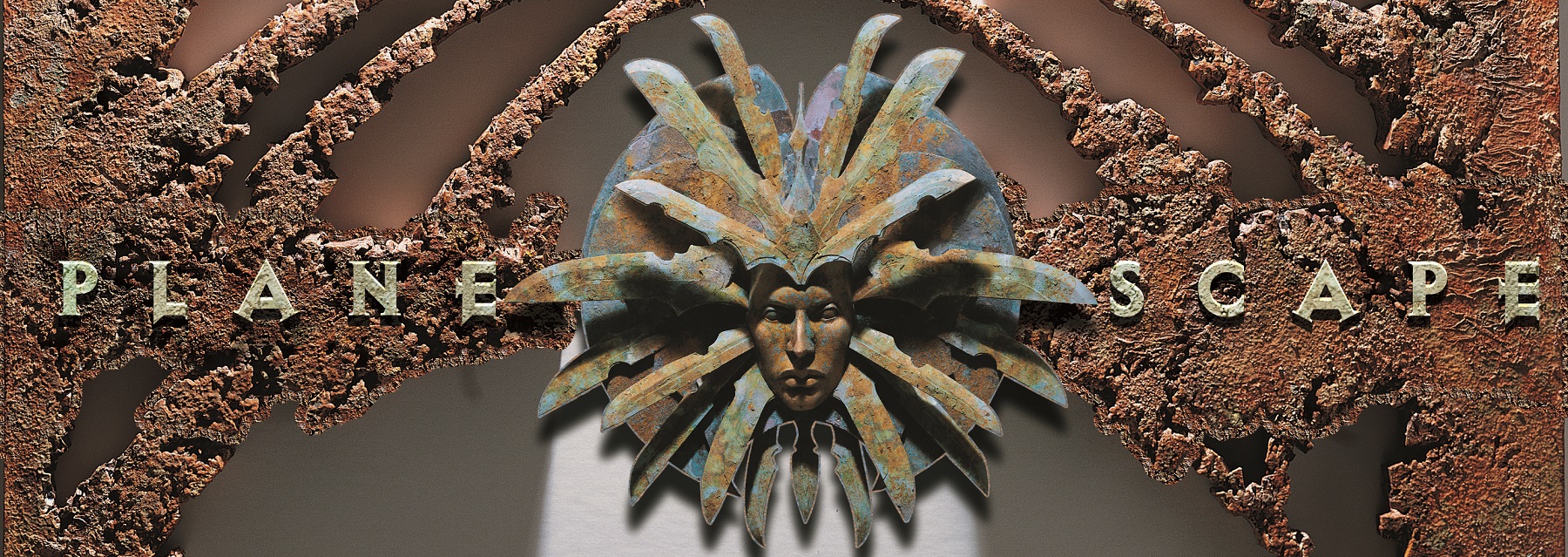Alright, I took a little break for family holiday madness. It is time to resume my exploration of the many official settings of D&D. My previous posts (found here and here) listed the more traditional settings. Today I am going to write about the meta-settings.
I suppose I should talk about definitions first. Up until now, I wrote about “settings” which can be defined as a fictional world in which the action of the story or game occurs. “Sub-settings” are small, thematically encapsulated settings inside the larger one. Thematically they are different enough to feel like a separate setting, even if they are still inside it. A “meta-setting” is a setting which is, by its lore and design, is intended to be a cross-over between multiple settings. This means it may have its own lore and geography, but much of its content is about how it crosses with other settings.
Examples
Setting = Forgotten Realms
Sub-setting = Kara Tur
Meta-setting = Spelljammer
A meta-setting is a multiverse setting, where tales can stretch across multiple worlds. Their origins are almost always shrouded and obscure, but they have clear ties to other existing settings.
That definition in place, lets begin…
Raventloft

So, I went back and forth about which meta-setting to start with. Eventually, I settled on Ravenloft because it was first mentioned well before the others. The Ravenloft adventure, written by Tracy and Laura Hickman. Tracy was also one of the people responsible for creating Dragonlance.
The Ravenloft adventure is rightfully considered a classic introducing the dread vampire lord, Strahd and the land around his castle. There was a second Ravenloft adventure featuring Azalin, a Lich from Greyhawk, which established that Ravenloft at least drew from that world. In 1990 the Ravenloft: Realm of Terror campaign setting was released. It was a boxed set. Back in the
The Ravenloft setting presented the realms already introduced in the previous adventures and a few new ones. They also brought in Lord Soth, a death knight from Krynn. This cemented the setting as crossing over with various others. Through much of the Second Edition era, there were quite a few things published for the Ravenloft setting. There was a revised box set which added and removed some lands to the setting. There was also a hardback called Domains of Dread, which further expanded upon the setting. The setting got a lot of
Overall, the setting was a showcase for a different kind of D&D adventuring. There were mechanics for when your characters fell under the sway of dark powers, essentially corruption. There were madness rules and a sense of inevitable dread was part of the Ravenloft style. It was D&D trying to do horror right. The world incorporated elements from all their major worlds, including Dark Sun, Dragonlance, Forgotten Realms, and Greyhawk. Vecna, their most famous Lich had his domain, as did Kaz. There were gods which had influence there, but the “Dark Powers” really held sway over the demi-plane made up of pieces from other worlds. The Dark Powers were a corrupting influence that pulled particularly driven and powerful evils into the world.
In 3rd edition, the setting was licensed to White Wolf as part of their Sword & Sorcery line. White Wolf is not a bad fit for Ravenloft. They have a successful history of working with horror. Unfortunately, they had to remove a lot of the elements from Ravenloft. They had to take out any reference to a setting Wizards had not licensed to White Wolf, so no Greyhawk or Dragonlance characters. White Wolf did publish a number of products for it though and it seemed well recieved.
Oddly, Wizards did publish a Ravenloft adventure and setting book called Expedition to Castle Ravenloft, for 3rd edition. This was separate from the White Wolf line. The new book
4th edition did not see a lot of stuff for Ravenloft. There were some Dragon Magazine articles and it did get some mention in a couple of the books. The Domain of Dread was firmly placed in the Shadowfell by the Manual of the Planes.
In the current edition the only real exploration of the setting was with Curse of Strahd. The adventure does dig into Strahd and his lands,but has yet to explore too much of it’s meta-setting elements. No Lord Soth or Vecna making an appearance.
Subsetting
Gothic Earth

In 1994 a box set was released called Masque of the Red Death and Other Tales. This was part of the Ravenloft line, and nominally was a Domain of Dread, but it is decidedly different than anything that D&D had produced. This was set in a Gothic Earth, roughly around 1890, with horror monsters in the shadows of our own history.
The Gothic Earth got a Gazetteer, a few adventures,
Outside some Dragon Magazine articles, D&D never really crossed over to the real world before. Sure, there inspirations from the real world, a couple of historical themed books in 2nd edition, but a setting explicitly attached to a real world historical period had never been done before. For that alone, Gothic Earth is remarkable.
Ravenloft is the first meta-setting on my list, but I should point out that it is very much its own thing. Yes, it crossed over with other settings, but that was not the point of the setting. Planescape and Spelljammer are both explicitly about traveling between the worlds or planes. Ravenloft is about getting trapped, about horror. The fact it pulled bad guys from various worlds was just to give the DM more fuel for traumatizing PC’s. It was
Spelljammer
Spelljammer has a claim at being the first Meta Setting. I went with Ravenloft because that adventure was published first but the campaign setting of Ravenloft, as a separate thing, was actually released in 1990, and Spelljammer was released in 1989. It went on to have a range of products released. There were multiple boxed sets, various supplements to describe the local space for various settings, novels, monstrous manual supplements,

The setting was wildly different than anything that had come before. Where Ravenloft kept to a familiar gothic horror theme, Spelljammer was decidedly unfamiliar. It involved “sailing” vessles which traveled in space, but not like spaceships in scifi stories. These ships were open decked magical affairs with no need to worry about the vacuum of space. They varied wildly in design from familiar galleons for human vessels to more organic shapes for more alien or mysterious ships. They were powered by magic, with spellcasters expending spells to keep it moving.
They also introduced a whole new cosmology to the D&D multiverse. The traditional planes and the Great Wheel still existed, but there was also the Crystal Spheres where the various prime material planes(ie campaign settings) existed. Between the spheres was a volatile fluid called phlogiston. This cosmology allowed campaigns where people sailed from world to world. It was wildly inventive.
I personally loved Spelljammer, but I have seen this setting get some real hate. There are reasons for that. It did take an overtly farcical and humorous approach. There were some deliberately ridiculous things in it. There were Giant Space Hamsters and other silly ideas. They were not the defining elements of the setting, but it definitely flavored its presentation. Humor in games can sometimes be
After 2nd edition, Spelljammer did not receive a lot of attention. TSR stopped publishing material before Wizards of the Coast bought them. There was a Dragon magazine article that dealt
In the current edition, there are several nods to Spelljamming, but nothing detailed. The Giff, a pc race of hippo men, were presented as monsters in one book. The Neogi in another. There is even a trapped Illithid Spelljammer ship in the Dungeon of the Mad Mage.
I think, I hope, we see more from Spelljammer in 5th edition. The setting has some compelling notions and themes to play with. Those people who hated the setting have let their vitriol quiet. Those of us who remember it fondly look for each and every drop they put out.
Planescape
Planescape was the last major setting created by TSR. It came out as a big box set in 1994. Like Spelljammer, it was a nexus of multiple worlds that people could travel to. It was different in a few ways. First, the art style was dramatically different. The work of Tony DiTerlizzi was

It also didn’t create a new cosmology. Instead, the Planescape worked within the traditional Great Wheel cosmology found in D&D’s core. It added elements but did not dramatically restructure anything. The setting renamed some planes and added a few more places and races, but it
The setting put an emphasis on the philosophical, by having factions be a major element to the setting. Each faction represented a view of the multiverse and correct behavior. Some opposed the gods. Others might be all about survival of the fittest. These factions were an element the PC’s could join. That was deliberate design goal. After the success of Vampire and few other games, it became clear that people liked having a team their character was part of.
The setting was pretty popular. Multiple boxed sets were released, along with multiple accessories and adventures. It also was the setting of one of the most critically acclaimed PC games ever published for D&D. There are several elements of Planescape that survived the setting, like Tieflings. The setting left a mark on D&D as a whole.
Unfortunately, the setting came at a bad time. First, TSR was on its heels. The long story of what happened at TSR is better told by others, but it was only a few years later that Wizards bought the company. A combination of bad management decisions and the rise of the collectable card game market was killing TSR. Also, a number of gamers had just moved on to other things.
I know that I read Planescape well after it stopped being published. I had moved on to Vampire, Rifts, Champions and the like. D&D had stopped being the cool kid on the gaming block for a lot of people.
Another factor was the glut of product D&D was turning out. They had released, Ravenloft, Spelljammer, Dark Sun and Planescape in relatively short succession. Each line had a range of books being turned out for them, along with material for the older settings. There was a lot of books coming out and that meant some settings might get lost in the shuffle. There was also a sense of burn out due to all those settings. After Wizards bought TSR, the settings more or less ended.
Planescape did not make it to later editions, but elements of it lived on. The further details it added to the planes became canonical from then on. The Tiefling became a core race in 4th and 5th edition. Sigil and some other core elements to the setting was mentioned in various places in 3rd, 4th, and 5th edition. While the setting as a seperate line has stopped, parts are canonical to the cosmology of D&D now.
Magic….sort of
So…Ravnica is out and I wrote about it some already. They also released several other planes as free PDF products. While they have not published any rules for how Planeswalkers work, or had them cross over into any other published settings, it is hard not to see Magic as one large meta-setting. If Ravnica is successful, there is a real possibility we may see some other full releases of Magic the Gathering setting books. If we do, is that a meta-setting?
Ed Greenwood’s house.
I would be remiss if I did not point out that there is a long storied tradition of material being written where Elminster, Mordenkainen, and other extra-dimensional travelers end up hanging out in Ed Greenwood’s place. These mostly appeared in various articles from Dragon Magazine. This stopped being described a few years ago, but I have it on good authority that the visits have continued.
Well, that is my review of the meta-settings of D&D. It was fun to write and research. I personally enjoy world jumping as a plot element in D&D so I think meta-settings are super useful. Next up will be my brief survey of micro-settings. Realms that only appeared in one book and had no relation to any other settings.

[…] get most of the big ones. The ones I missed were the sub-settings (subsets of the larger settings), meta-settings(settings that crossover to other settings) and the micro settings. Micro settings are small tightly […]
Yeah Spelljammer was great.
In terms of setting design, I never thought they quite got the distances right for adventuring between spheres; in took months and months in game time, where as it may have been better to treat ‘The Flow’ as a kind of Hypersapce and it only take a few days to travel to near spheres, and maybe a month to very very far ones.
That’s how I do it anyway, as it allows a bit more of a star wars / star trek type feeling which players quite like (hopping between star systems).
Great articles though.